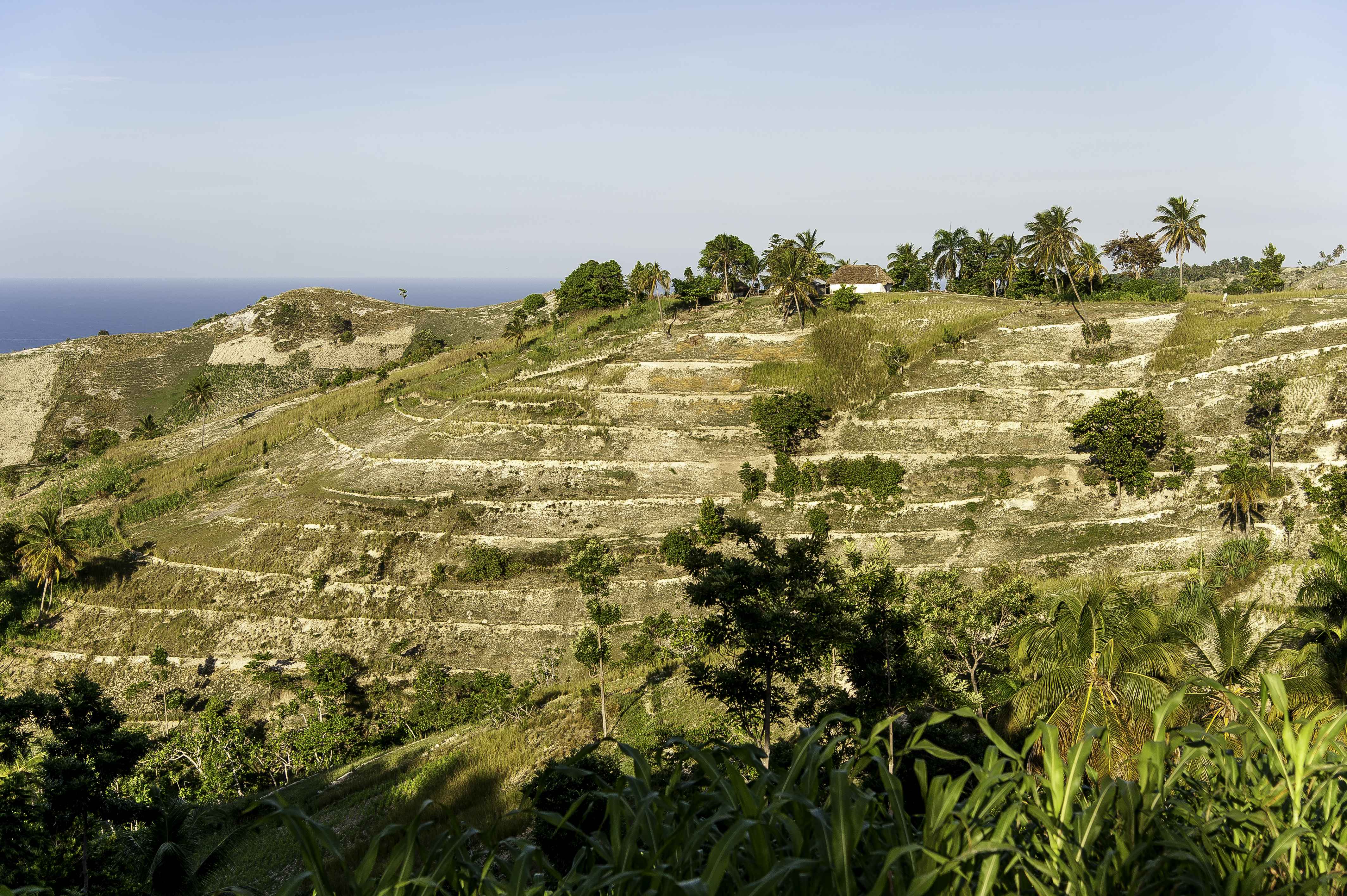

The ridge to reef approach aims to provide a holistic intervention for protecting the coastal area by targeting environmental degradation in the uplands ("ridge") that impact coastal ecosystems through sedimentation, by restoring the shoreline and protecting marine ecosystems ("reef"), thereby mitigating storm surges, coastal and inland flooding and reduce people’s exposure and vulnerability to these hazards. At the same time, aiming to provide direct livelihood benefits to targeted households and stakeholders in the project.
- Uplands: Reduce erosion in upland areas through
- improved soil management of 6.5 ha of sustainable vetiver production, which also increases economic benefits.
- establishment of tree nurseries with a capacity of 137,000 seedlings of coastal, forestry and fruit trees;
- 25,380 trees planted on 137 ha near riverbanks to reduce upland erosion and sedimentation.
- Shore: Create natural coastal buffers through re-vegetation of 3.82 ha of coastal areas (0.66 ha in rivermouths and 3.2 ha in shorelines)
Sea: Create resilient and sustainable fishing through strenghening the fishers association in Port Salut and responding to some of their needs to reduce nearshore fishing.
The project built on UNEP’s presence and ongoing activities in the South Department of Haiti, such as the Côte Sud Initiative.
The ecosystem-based interventions in Port Salut were designed to deliver multiple livelihood benefits in addition to disaster risk reduction/climate change adaptation. For instance, more sustainable vetiver cultivation can produce higher quality produce which increases income.
The re-vegetation and re-forestation along rivers and coastal areas was monitored. In the uplands, much of this occurred on private land and landowners were trained and given technical assistance. The monitoring indicated a 75% seedling survival in those areas. In the communal coastal areas, however, survival rate was 57%. A number of field visits took place to identify the reasons for this and necessary steps to establish adaptive management and improved practices in the future. These steps included awareness raising to catalyse more protection of the seedlings by the community and improving planting techniques.
The project invested in strengthening community-based organizations (vetiver farmers and fishers) as a key mechanism for implementing project activities. This was effective in Haiti because it addresses a key vulnerability of vetiver farmers and fishers. However, these community-based organizations still require sustained capacity development support.